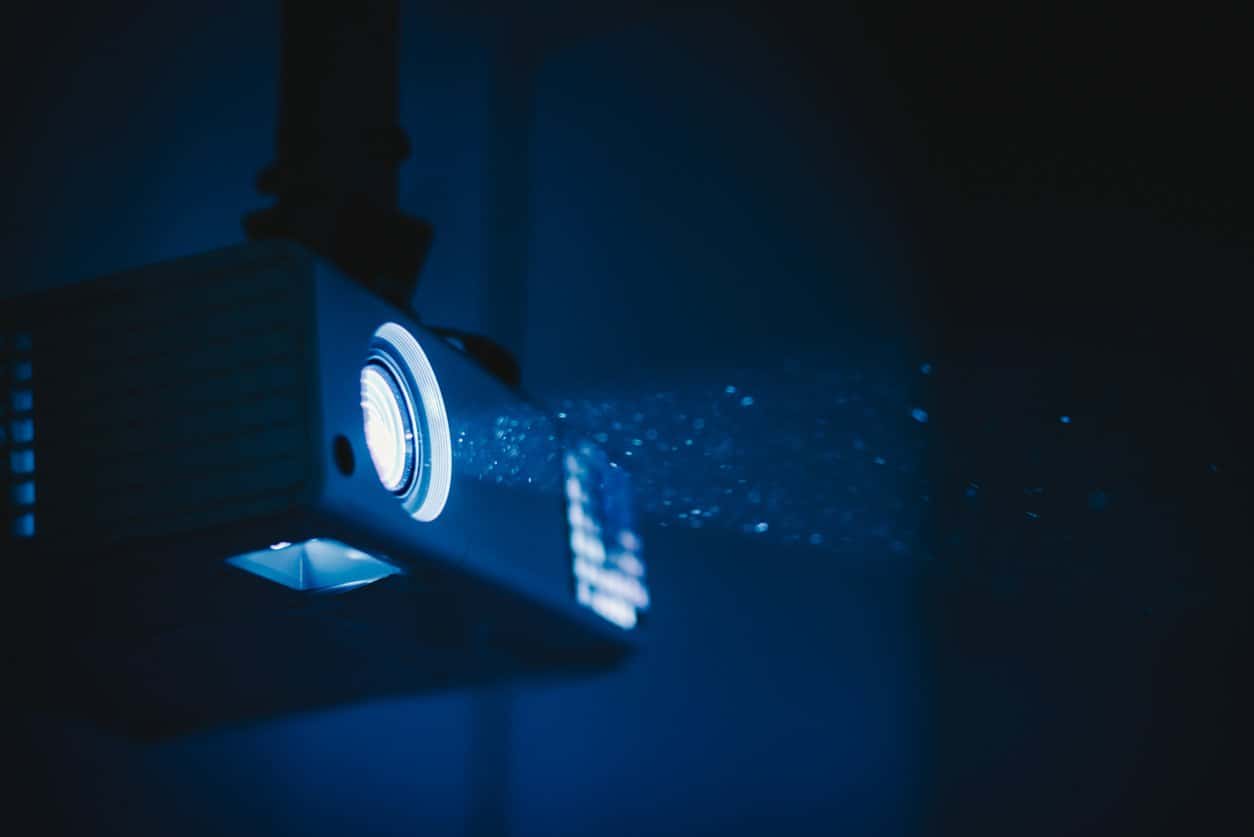LED wall panels are more popular than ever for video displays. Their ease of use and bright images make them the ideal option for a wide range of applications like store signage, billboards and large format advertising, wayfinding signage, performance displays, indoor retail advertising, informational screens and waiting room infotainment. With the increasing popularity of LED wall panels, costs continue to decline which translates to more options for the consumer.
When choosing between an LED wall panel and a projection display for your business, you’ll want to consider the following factors:
VISIBILITY
Simply put, LED wall panels are brighter and more direct than a projection display.
Every bit of distance matters when you’re talking about bright, clear visual information. Because LED walls are their own source of light, the images they present appear crisper and more vivid to the viewer. Projectors transmit the image to a projection screen which reflects the light and images to the viewer’s eyes.
Projectors tend to suffer a noticeable decrease—up to 30%—in brightness in the first year of use, are not as capable of high contrast, and have difficulty displaying deeply saturated colors. With an LED wall, the display produces bright, high-contrast, saturated color directly to the audience.
Consider that ambient lighting will make a projected image more difficult to see; reflected projections appear diluted in natural light. LED images aren’t affected by ambient light. Especially at outdoor music festivals, ballparks, stadiums, and retail-industry shows, LED panels are the clear choice.
Depending on the location, LED walls don’t always need to run at full brightness. Your LED display may last longer than its anticipated shelf life and use less energy over time.
CLARITY
High Definition (HD) video and High Dynamic Range (HDR) are the new industry standard for visual displays in homes and businesses alike. LED wall panels support HD and HDR, whereas many projectors display in standard definition, and can’t display HD images at full resolution.
What about large format images? Certainly, projectors are more flexible when displaying huge images, defined only by the available projection surface and the power of the projector. While it’s a big jump from a single large LED wall panel to a highway-sized billboard, you can customize a big (but not billboard big) LED wall display by arranging multiple LED displays to create a composite that’s as large as you need.
FREEDOM AND FLEXIBILITY
LED walls are thin, relatively light, and can be dismantled and moved into a new space more easily than projector displays can. They are simpler to install and quicker to power up. This means more flexibility and fewer venue restrictions when setting up your display.
Projection display systems require unimpeded space between the projector and the viewing area You can project onto a blank wall, but this will diminish the image quality. Instead, you’ll also need to get a high-quality screen to accompany your projector. For optimal viewing, you’ll need to control the ambient light in the room, either by dimming or turning off lights or using blackout curtains. The projector has to be mounted high up and in the back of a room or display area. Anything in the way—such as low-hanging fixtures or low ceilings—becomes an obstacle, creating serious arrangement constrictions.
The modular nature of LED panels means unlimited arrangement flexibility and design creativity. Since the panels are their own source of light and aren’t diminished by ambient light, you can take your presentation wherever you want to go.
COST
LED walls will cost about 15% to 20% more upfront than projectors for a similar image size and quality, but reduced maintenance costs often balance out the higher initial investment.
Projector bulbs and light engines require routine replacement, and those parts can be expensive — a new bulb alone can cost thousands of dollars. LED walls don’t require the same amount of upkeep and consume about half the power over time, saving energy costs.
As LED wall panels continue to grow in popularity, along with the audio visual technology to make the most of their high-contrast ratio and vibrant displays, their costs will continue to drop. Flexibility, ease of use and quality that will please your most discerning customers and viewers make LED wall panels a solid investment for your business. DGI is premier provider of audio and visual communication products and services, and is available to help you design the display your company needs.

